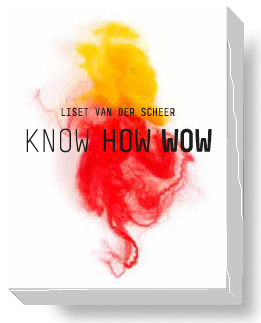



Weaving
salto
The Salto originated in my fascination with putting a magnifying glass on everything. When you do that, you realise, and see, that everything you see in miniature, also exists in large and vice versa.
The yarn is knotted in a loop round a broomstick. It is kind of a rod weave; in upholstery fabric it is called epinglé. The result is a short, compact loop.
This technique can also be applied in wall to wall carpet weaving.

Salto Danskina/Kvadrat

At the frog’s eye, a short loop with a two-tone yarn is used. The colour gradient cannot be controlled so that coincidence determines the final image as well. This sample has been made for edge finishing, it is as if the loop comes up from the weft.
For weaving you need a warp and a weft. The warp is set in one or more colours.
Each warp thread passes through a heddle bar, an eyelet in a shaft, and then through a reed. The shafts can move up or down leaving room for the weft thread. The shafts that move the warp threads up or down determine the definitive pattern.
A two-ply consists of 2 yarns, usually of equal thickness, that are twined together. When the colours are different it is called a mouliné.
